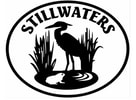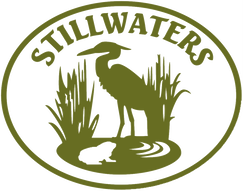NK Rotary Funds Lesson Development for Local High School Students
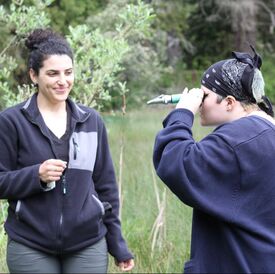
Donning boots and with Stillwaters lesson books in hand, local high school students ventured into the Kingston Salt Marsh on a sunny May afternoon for their first field study. They identified plant species, counted invasive reed canary grass stems, and measured the salinity of the water in the soil under their feet to understand how native and invasive plants have responded to culvert removals on West Kingston and South Kingston Roads. Using the data they collected, students tested their hypotheses and discussed the invisible forces behind ecosystem recovery and plant population dynamics. A grant from the Kingston-North Kitsap Rotary provided Stillwaters with the resources to develop this and other lessons for high school students about local environmental problems and solutions.
(Right/Above: WWU intern Sara Mahmud helps a student use a refractometer to measure pore water salinity)
(Right/Above: WWU intern Sara Mahmud helps a student use a refractometer to measure pore water salinity)
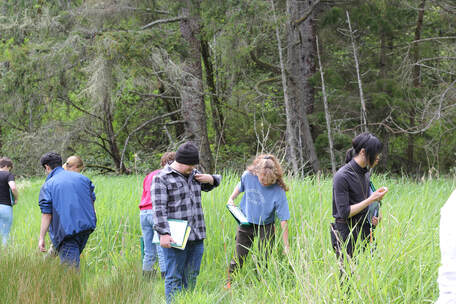
The goal of this lesson is to generate awareness and interest in students regarding issues associated with culverts (and their removal) and to provide college interns with experience in environmental education. Stillwaters worked with Kingston High School AP Environmental Science teacher, Bob Geballe, and our winter college interns Maddie Rutter of University of Washington and Sara Mahmud of Western Washington University to design activities centered around part of Mr. Geballe’s curriculum: environmental mitigation (minimizing adverse environmental impacts). The Kingston estuary (“the slough”) is an excellent example of environmental mitigation in our backyard. Two undersized culverts had been negatively impacting the salt marsh/estuary for more than half a century until their replacement by long-span bridges in 2012 and 2018 returned natural tidal flow to the area, allowing the ecosystem to begin to repair itself naturally.
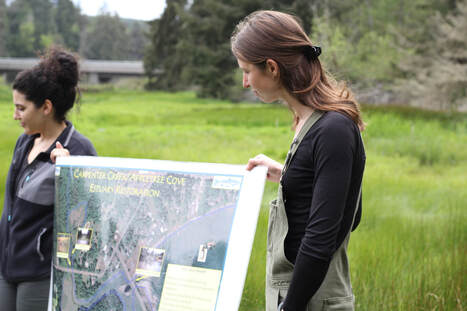
As part of her internship, Maddie helped us craft a curriculum to enable students to understand some effects of this restoration based on the responses of salt marsh plants. This lesson focused on how and why invasive reed canary grass has been receding as a lens to understand some of the broader ecological changes in the marsh. Guided by staff, Sara, and hypotheses developed from reading lesson materials about various reasons plant communities change, students collected data on the density of invasive reed canary grass and on soil salinity. They looked for patterns in the data and discussed how the results supported or refuted their hypotheses and how to investigate further.
(Right: Sara and Program Coordinator, Hanna Brush show students an aerial view of the Kingston saltmarsh-estuary complex. West Kingston Bridge is in the background.)
(Right: Sara and Program Coordinator, Hanna Brush show students an aerial view of the Kingston saltmarsh-estuary complex. West Kingston Bridge is in the background.)
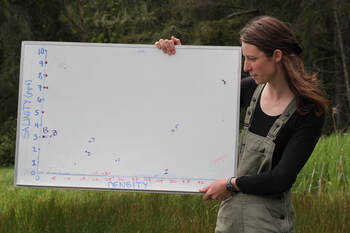
Next academic year, we plan to involve more students in other field lessons and volunteering, including measuring erosion and accretion of sediment on the beach at Arness Park. With community support, Stillwaters can continue to provide Kingston’s future environmental scientists, voters, business owners, decision makers, etc. with educational experiences to help them understand and address future environmental challenges in our growing community.
(Left: Program Coordinator, Hanna Brush, holds up a chart of data the students collected).
(Left: Program Coordinator, Hanna Brush, holds up a chart of data the students collected).
